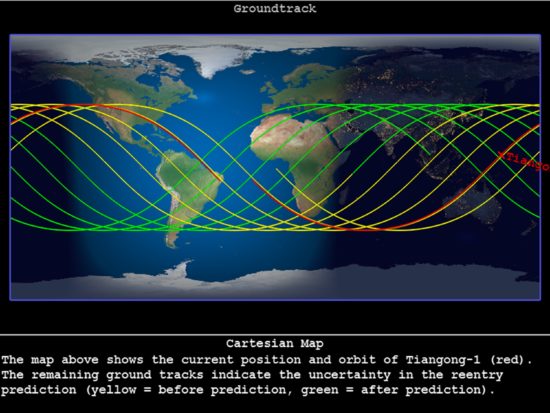The latest Aerospace Corp. prediction of the reentry time for the Chinese Space Station Tiangong-1 is now 3:30 p.m. CDT (plus or minus 8 hours) on Sunday, April 1. As reentry approaches, the predictions will get better, and the potential paths of the satellite will be narrowing.
The latest potential paths of reentry look like this:
The paths over the U.S. are morning paths, and would be quite early in the time window of reentry. The total time these orbits are visible from the contiguous U.S. is only about 25 minutes (you could see the satellite burning up as far as 400 miles away from these paths, assuming no clouds are in the way). That is only 2.6 percent of the total time of the reentry window (16 hours), so given the the fact the U.S. paths are quite early in the window (and thus lower probability), I’d say the chances of anyone in the U.S. getting to see the fireworks show is less than 2%. Once you factor in cloud cover, it’s probably more like 1%.
Of course, we always knew the probability was very small.
And I think Michigan can now deactivate their Emergency Operations Center.
But, if you are feeling lucky and live within a few hundred miles of one of the paths show in the above graphic, I suggest visiting heavens-above.com, (1) enter your location (or nearest city), (2) click on “Tiangong-1”, and (3) change from “Visible only” to “All”, to see exactly what time(s) the satellite will be passing near you. Click on one of those times to see the path it will be making across the sky.

 Home/Blog
Home/Blog




